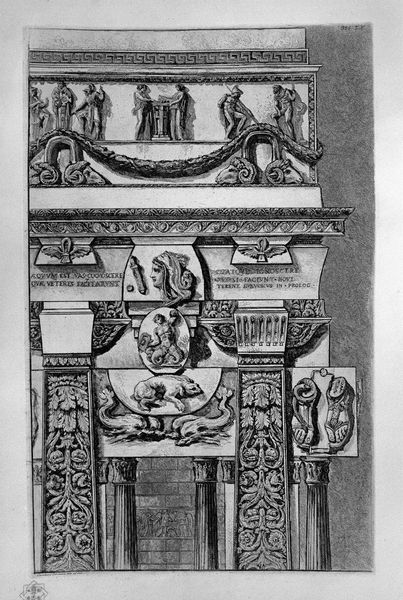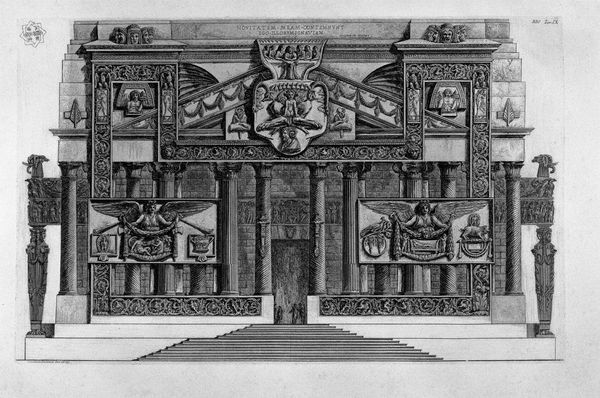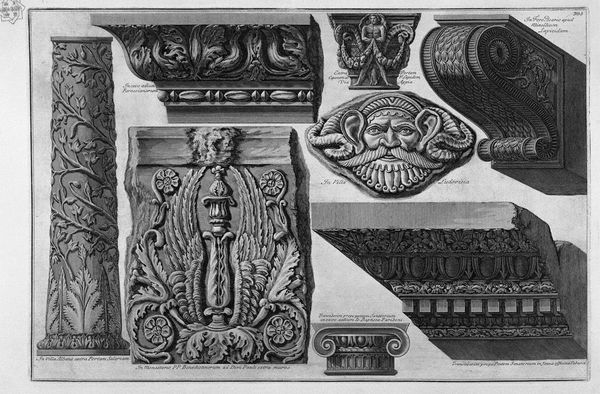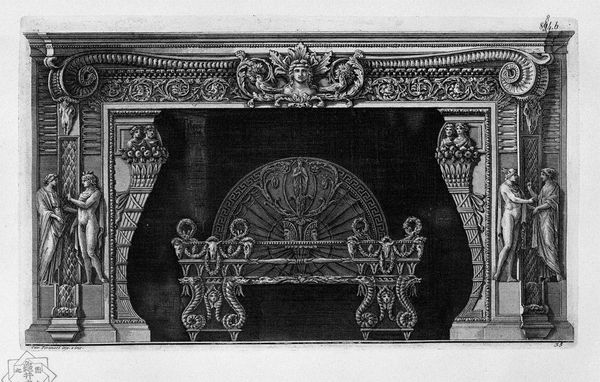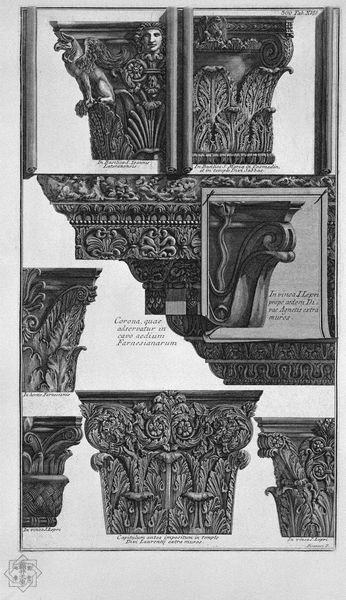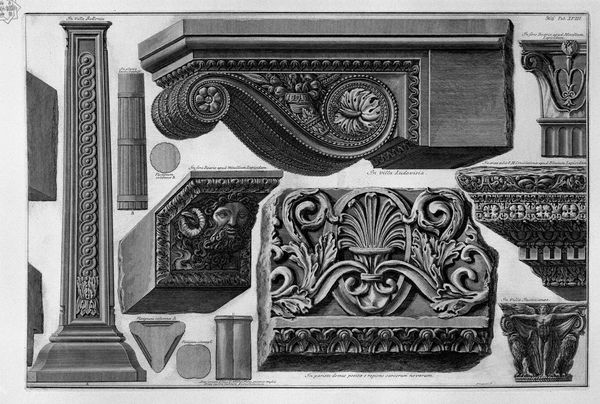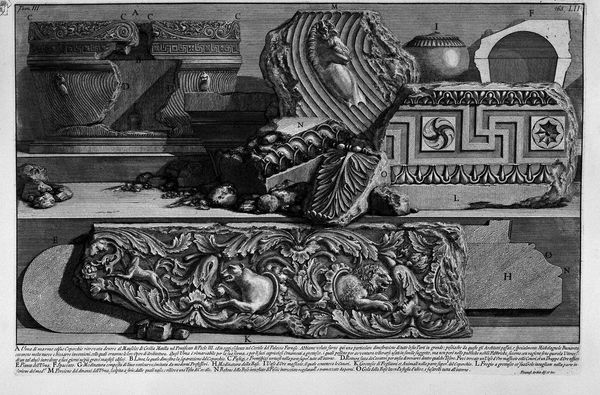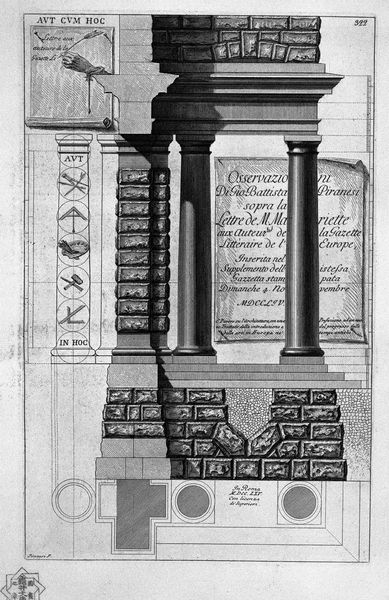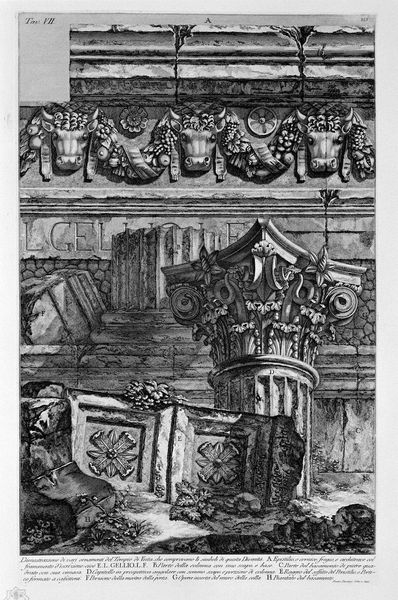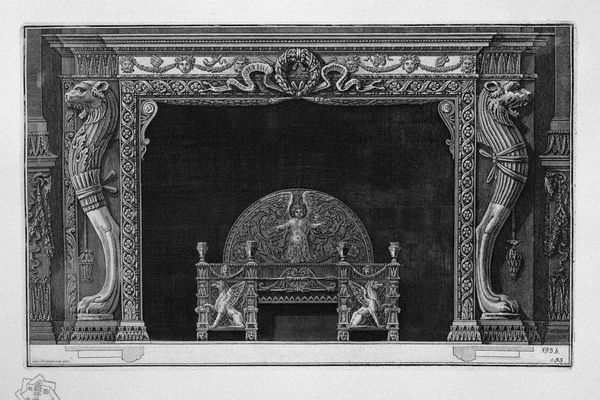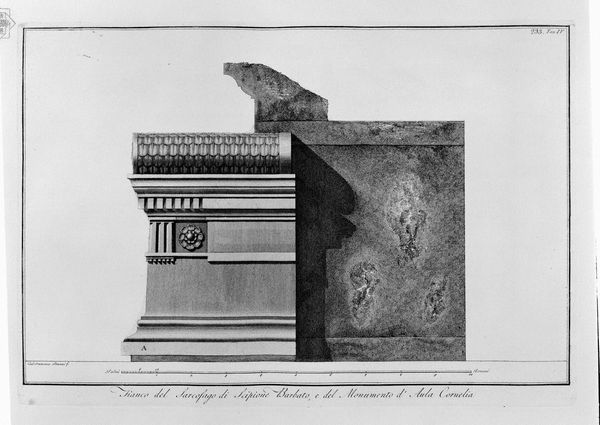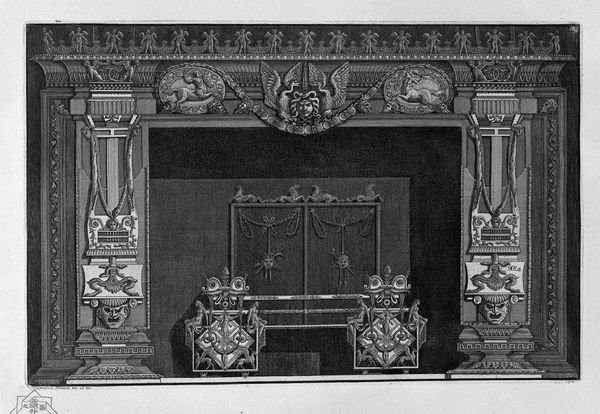
Stand in the town of Cora embedded in the wall of the house of Mr Antonio Corbi
0:00
0:00
drawing, print, engraving, architecture
#
drawing
#
neoclacissism
# print
#
sculpture
#
classical-realism
#
column
#
engraving
#
architecture
#
statue
Copyright: Public domain
Editor: So, this is Giovanni Battista Piranesi's engraving, "Stand in the town of Cora embedded in the wall of the house of Mr Antonio Corbi." I’m immediately struck by the intense detail. It feels very architectural, but almost… nostalgic? What jumps out at you? Curator: The image vibrates with cultural memory, doesn't it? Look at how Piranesi depicts these fragments – relics of ancient buildings in Cora. They aren't just architectural studies; they are loaded with symbolism, referencing the grandeur of a lost past. Notice how these ornamental remains, each taken from various locations such as "In Piazza de' Piccioni" and "Nel giardino del Sig Domenico Luzi" seem uprooted and displaced? Editor: I do. Is he making a comment on the passage of time, how even grand civilizations crumble? Curator: Precisely. Piranesi isn't simply documenting; he's elegizing. The very act of embedding these relics in new structures – Mr. Corbi’s house, for example - becomes a potent symbol of cultural continuity and adaptation. What emotional effect do these transplanted artifacts have on you? Editor: A little haunting. It’s like seeing ghosts of the past repurposed for the present. So Piranesi is almost preserving them through his art? Curator: Absolutely. He uses the print medium to disseminate and thus, safeguard, architectural memory. Each line, each shadow meticulously etched, serves as a monument in itself. Does seeing the columns and statuary arranged in this drawing elicit in your imagination a kind of architectural phantom limb? Editor: Yes, I think so. It really brings into focus the power of images to carry historical weight. Curator: Indeed, an apt lesson in seeing beyond the surface, beyond documentation and toward enduring symbols of the past. Editor: Well, that's given me a whole new perspective on how to interpret architectural prints. Thanks!
Comments
No comments
Be the first to comment and join the conversation on the ultimate creative platform.
